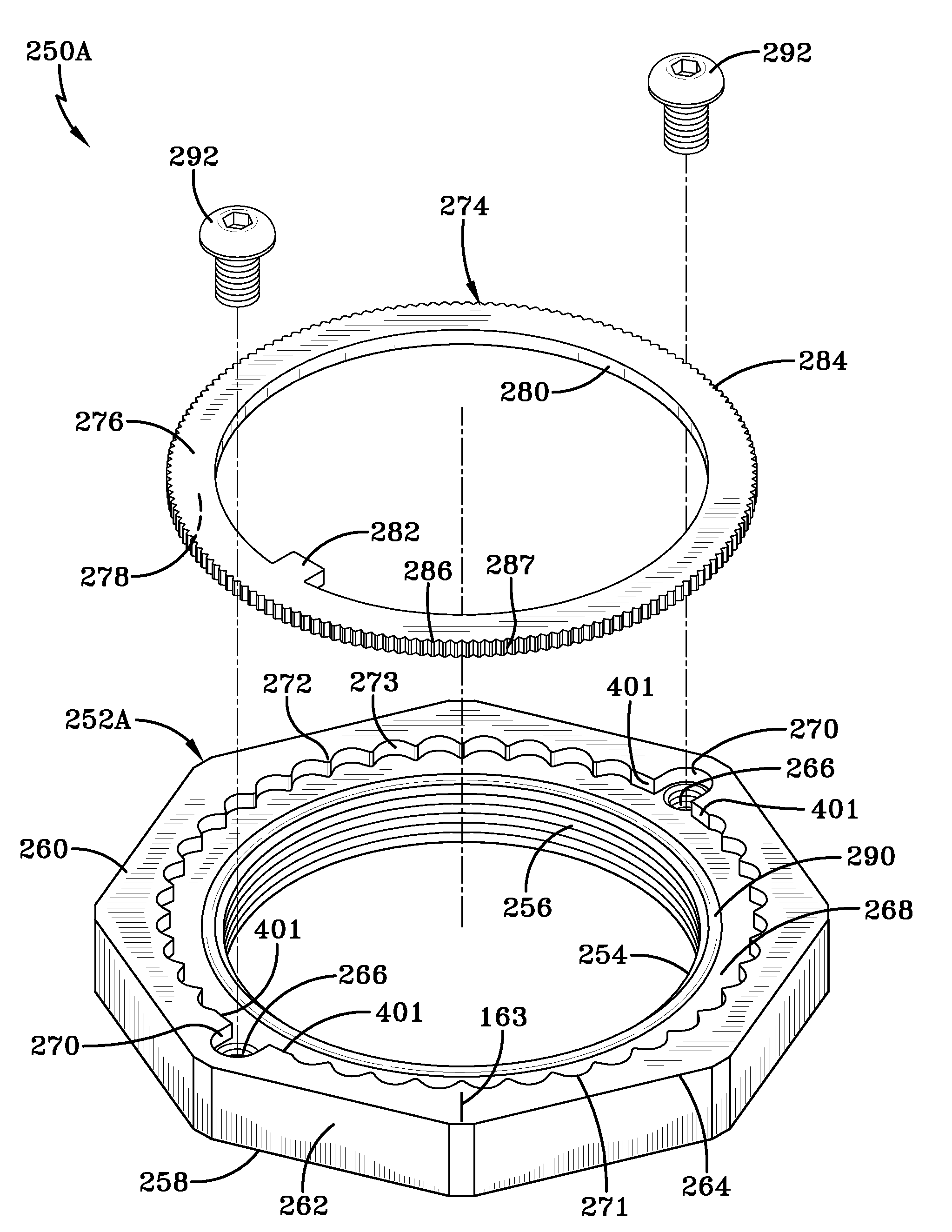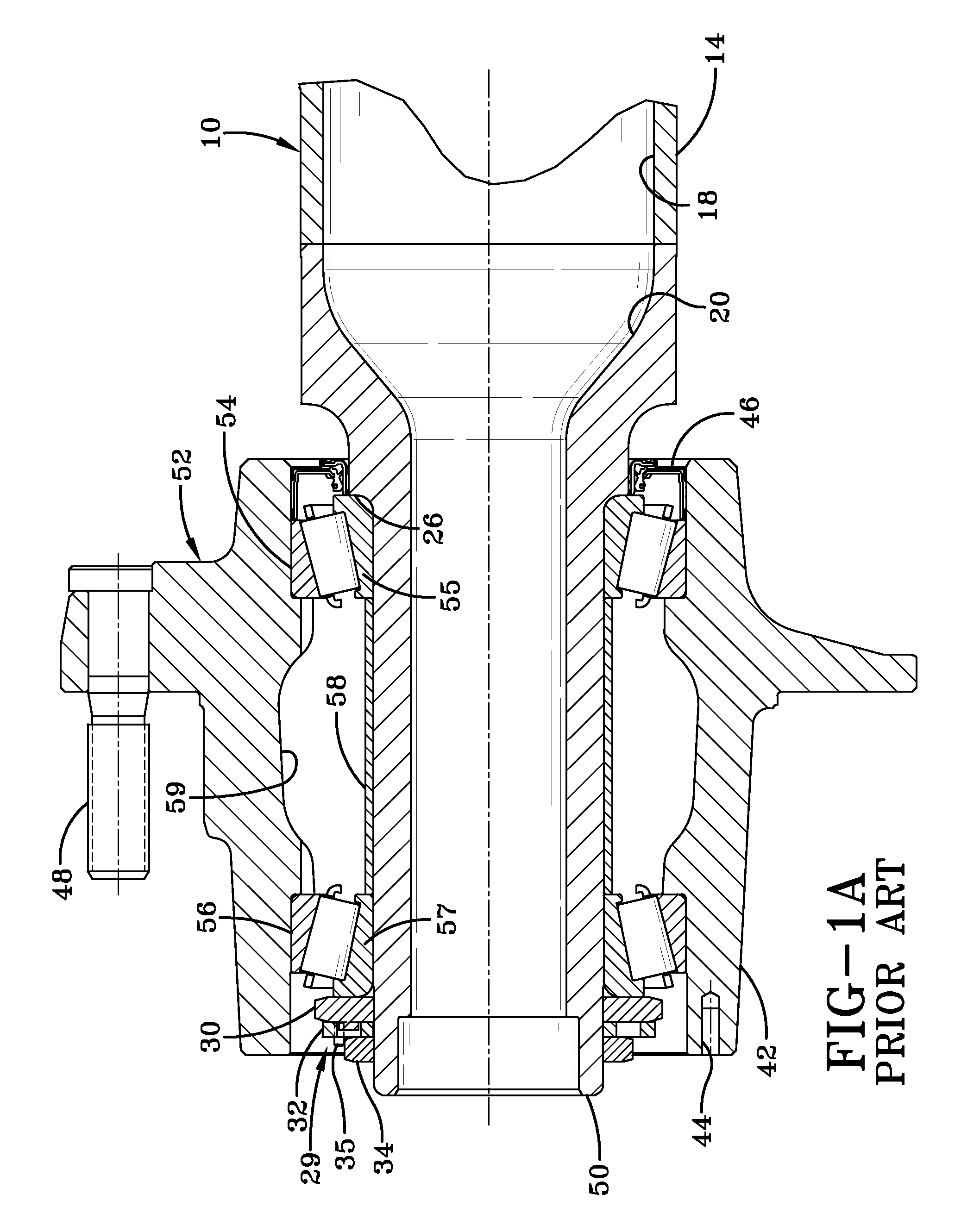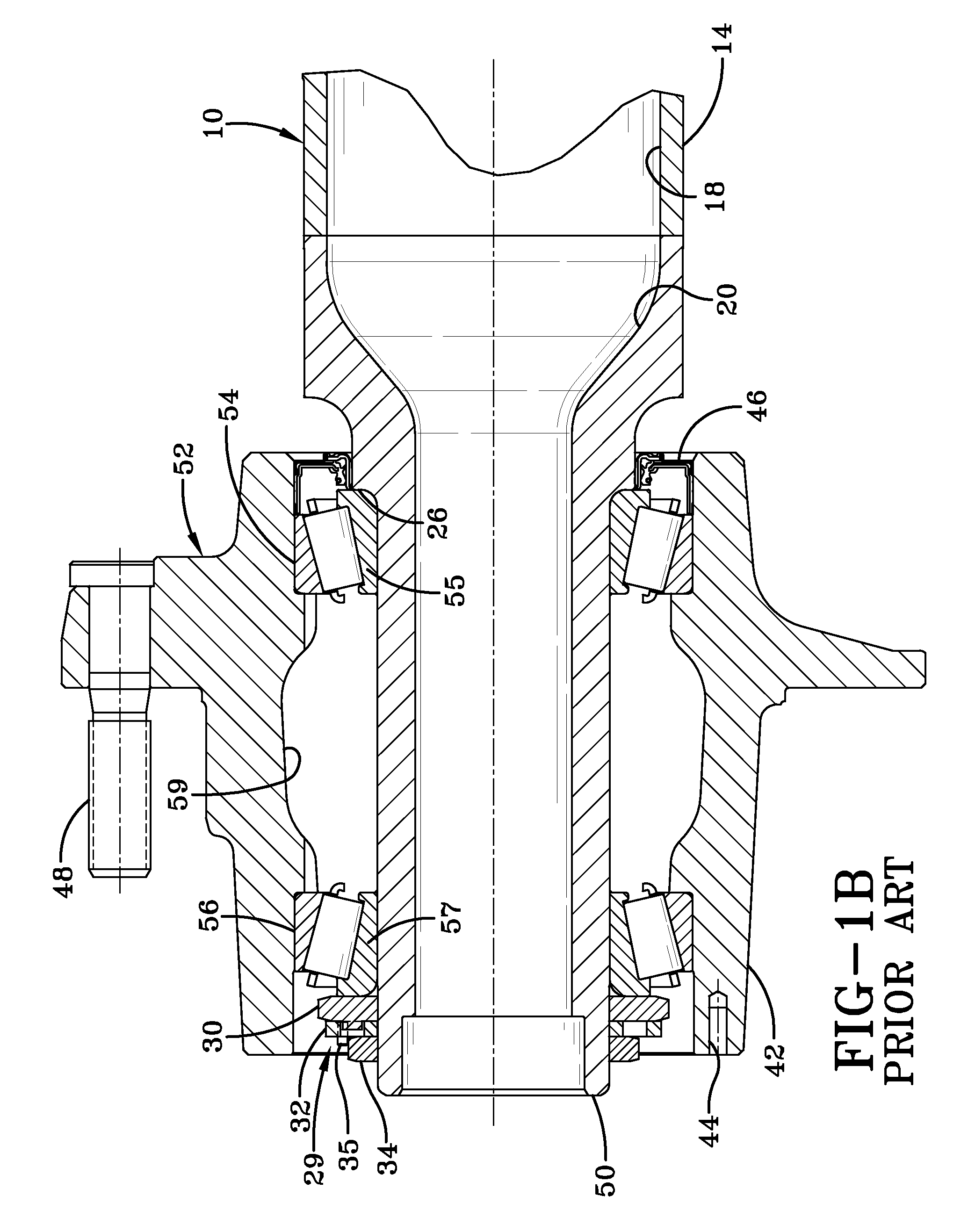Axle spindle nut assembly for heavy-duty vehicles
a technology for axle spindle nuts and heavy-duty vehicles, which is applied in the direction of screws, threaded fasteners, bolts, etc., can solve the problems of excessive axial end play of the wheel end assembly, detrimental to its performance, and maintenance of the proper clamp load, so as to prevent substantial rotation of the nut
- Summary
- Abstract
- Description
- Claims
- Application Information
AI Technical Summary
Benefits of technology
Problems solved by technology
Method used
Image
Examples
first embodiment
[0064]Turning now to FIG. 7, a first embodiment axle spindle nut assembly of the present invention is indicated generally at 200 and is shown incorporated into first axle spindle 50 and wheel end assembly 52, with the exception that bearing spacer 58 (FIG. 1) preferably is not included, as will be described in greater detail below. Axle spindle nut assembly 200 includes an optional inner washer 202, an axle spindle nut 212, an outer washer 230, and at least one screw 244. Axle spindle nut 212, washers 202, 230 and screw 244 cooperate to secure bearings 54, 56 of wheel end assembly 52 in place, and to preload bearing cones 55, 57.
[0065]More particularly, with additional reference to FIGS. 8 and 9, optional inner washer 202 is a flat washer having an inboard face 204 that is proximate to and contacts outboard bearing cone 57 of wheel end assembly 52 in an assembled state. Inner washer 202 also includes an outboard face 206, which is proximate to and contacts nut 212 in an assembled st...
sixth embodiment
[0096]It is understood that optional washer 202 having graduations 154, can be used with third, fourth, fifth, and sixth embodiment axle spindle nut assemblies 250A-D, and nuts 252A-D each having an indicator mark 163, respectively, without affecting the overall concept of the present invention. It is further understood that circumferentially-extending nubs 290, 290′, circumferentially-extending arcuate-shaped nubs 290″, and circumferentially-extending nub or ramp 290′″, each could be disposed on outer washer 274 of axle spindle nut assemblies 250A-D, respectively, without affecting the overall concept of the invention.
[0097]Turning now to FIGS. 19-22, a seventh embodiment axle spindle nut assembly of the present invention is shown and is indicated generally at 300. Third embodiment axle spindle nut assembly 300 is similar in structure and operation to first embodiment axle spindle nut assembly 200 and second embodiment axle spindle nut assembly 250, with the exception that mating f...
second embodiment
[0100]With reference now to FIG. 22, outer washer 310 is formed with a tab 311, which engages axle spindle keyway 196 (FIG. 7) as described above for first and second embodiment outer washers 230, 274. Outer washer 310 includes a first face 312 and a second face 314. At least one of first face 312 and second face 314 is formed with a recess 316 proximate an inner circumference 317 of washer 310. An outer edge 319 of recess 316 is formed with radially inwardly extending features 318, such as teeth. Radially outwardly extending grooves 326 are formed between teeth 318. Radially outwardly extending teeth 308 formed on nut 302 extend into selected ones of grooves 326 in outer washer 310, while radially inwardly-extending teeth 318 formed on the outer washer extend into grooves 324 in the nut. In this manner, radially outwardly extending teeth 308 formed on nut 302 positively mechanically engage and interlock with mating radially inwardly extending teeth 318 formed on outer washer 310, o...
PUM
 Login to View More
Login to View More Abstract
Description
Claims
Application Information
 Login to View More
Login to View More - R&D
- Intellectual Property
- Life Sciences
- Materials
- Tech Scout
- Unparalleled Data Quality
- Higher Quality Content
- 60% Fewer Hallucinations
Browse by: Latest US Patents, China's latest patents, Technical Efficacy Thesaurus, Application Domain, Technology Topic, Popular Technical Reports.
© 2025 PatSnap. All rights reserved.Legal|Privacy policy|Modern Slavery Act Transparency Statement|Sitemap|About US| Contact US: help@patsnap.com



